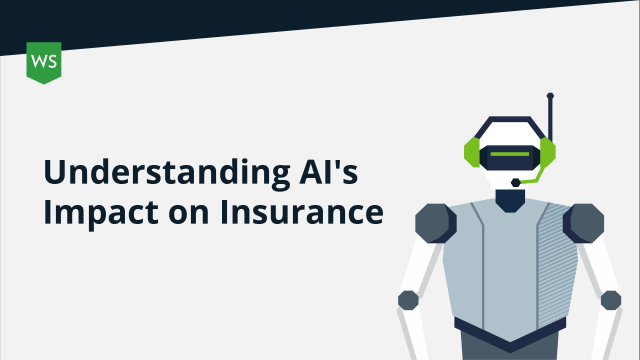Blog
State of the US Private Equity Middle Market from an Insurance Perspective, Year-End 2018
2018 was a record-breaking year in the US Private Equity Middle Market, both in terms of deal count and deal value. According to Pitchbook's 2018 Annual US PE MM Report, middle market ended the year with four successive quarters of >$100.0 billion in deal value being put to work. As the sun sets on 2018, the final numbers were 2,971 total transactions and $427.9 billion in deal value, approximately 15% YoY increases for each. Chief among questions for fund managers around the country: how far can the upward trajectory go?

Supporting his overarching question are several sub-topics ripe for discussion: (1) what helped lead the US MM to not only its first quarter of $100.0 billion, but 4 consecutive quarters of >$100.0 billion being put to work; (2) what are some key trends and where will the US MM go in 2019; and (3) finally, how can an expert insurance advisor help win deals and execute processes on the buy and sell side in 2019?
At a Glance: 2018 US Middle Market Sector Recap
- Through December 2018, 2,971 completed transaction (YoY increase of 15.1%)
- Total deal value: $427.9 billion (YoY increase of 14.8%)
- Median transaction size: $175.0 million (YoY decrease of 1.57%)
- Trends in multiples:
- 2x Debt / EBITDA
- 3x Equity / EBITDA
- 6x EV / EBITDA
- Exits: 876 total exits, compared to 1,029 in 2017
- Fundraising: 130 new funds closed in 2018 with $109.5 billion in value
Interpreting the Numbers
2018 was a record year, to say the least. According to data from PitchBook, the ongoing trends within the middle market mirror that of the broad PE landscape: sizes of transactions, exit activity, and fundraising activity are increasing simultaneously. The year's frothiness was due in part to the affordable financing landscape of high-yield bonds and leveraged loans which financed leveraged buyouts. EBITDA multiples remain high, which is consistent with the past several years. This could be a reason why exit activity slowed in 2018 as compared to 2017 as high-caliber assets are simply too expensive for the middle market. These exit opportunities are riper for larger strategics with available cash on the balance sheet that are moving downstream.
Fundraising efforts remained high in 2018. Although both the number of closed funds and total new capital raised were lower YOY than 2017, the US MM saw >$100.0 billion in fundraising efforts, clearly indicating the strength of the asset class. According to PitchBook, his further increases confidence in the middle market across the investment spectrum.
Key Trends for 2019 – Will the Boom Continue?
So far in 2019, the M&A market shows few signs of slowing down. There are several ways in which the currents may shift, depending on fluctuation or increased interest rates, ongoing tax reform, and new Congressional legislation on the horizon. But for the most part, I believe the broad MM M&A marketplace will remain strong throughout 2019. As we push further in Q1 2019, here are just a few trends on the immediate horizon:
- Competition for high-quality assets will continue and the number of deals and transaction value will also continue to increase.
- A recent 2019 trends report from Deloitte indicates continued acceleration of the M&A market in 2019 in terms of deal size and number of transactions. 76% of M&A executives at US-headquartered corporations and 87% of M&A leaders at domestic PE firms expect an increase the number of deals they will close over the next 12 months.
- Much of the activity in terms of number of deals will likely be led by add-on activity. With EV/EBITDA multiples at record numbers (and continuing to increase), some would-be good looking assets are simply too expensive. But, with so much dry powder available, PE firms are likely going to rely heavily on add-ons to add to existing platforms as a way to put some of the existing capital to work.
- Integration continues to be a top priority among deal-makers post-transaction.
- 23% of PE and corporate executives in the Deloitte study of 1,000 executives indicated integration was the single most important factor of a successful transaction in 2018.
- 11% of respondents indicated a sound due diligence process was a critical key for success.
- Family Offices will continue to gain in popularity and sophistication.
- As mega-funds continue to gain in popularity and more mega-deals are announced, the lower middle market will have increased competition from the family office community.
- Family Office Exchange (FOX), a leading authority in the ultra-high-net-worth individuals and family office arena, estimates as many as 6,000 US-based family offices. EY estimates the number of family offices globally has increased tenfold since 2008.
- Middle market family owned and operated businesses, among others, view family office investment or acquisition to be an alternative to the traditional private equity approach.
Engaging an expert risk management advisor can help win deals and garner successful integration of the platform or add-on post-close.
Engaging an insurance advisor with expertise in transaction-related advisory services can help not only win deals, but facilitating a seamless integration and lowering the Total Cost of Risk can also help increase EBITDA of the portfolio company post-close. This can occur at three stages of the deal:
- Transactional Risk Insurance Solutions, such as Representation and Warranties Insurance
- Most if not all sellers desire to have more proceeds at close. A R&W insurance policy allows sellers to reduce the amount held in escrow, thereby increasing available proceeds at close. This is a win-win, whether the seller is a founder/operator looking for a liquidity event or a PE sponsor looking to maximize cash distributable to LPs.
- Terms and conditions vary by deal as each policy is manuscript and follows the underlying agreement. Understanding the market conditions is critical and can help avoid issues nearer to close.
- Sellers will frequently utilize insurance capital to box-in potential or unexpected liabilities, such as tax concerns or pending/ongoing litigation with a complex transactional risk solution, whereby they can eliminate the special indemnity a potential buyer may include in an agreement.
- Insurance Due Diligence
- Understanding the underlying property, casualty, management liability, and employee benefits risks inherent to a business helps a buyer better understand the foundation of risk management and the total cost of risk pre-close.
- Decisions can be made pre-close to reduce or eliminate risk drivers post-close.
- Post-Close Insurance Program Implementation and Integration
- Almost one quarter of respondents in a recent Deloitte study of 1000 corporate and PE executives indicated integration was the leading factor of a successful acquisition. While a small portion of the overall integration, employee benefits can greatly strain an incoming management team.
- The new owner may desire to change the existing benefits program post-close to align more with industry benchmarks, potentially disrupting employee satisfaction and morale.
- Add-on acquisitions must be seamlessly integrated into the platform to avoid unnecessary disruptions of the day-to-day lives of the employees.
It is true the US Private Equity Middle Market had a banner 2018. Deals were plentiful, valuations remained high, and leading indicators of a healthy market continue to trend upward. Many factors could lead the market to continue to expand in 2019 or contract. As we push forward into Q1 2019, though, it appears the market will continue to thrive over the next several quarters: there is plenty of support for the asset class, significant dry powder to deploy, and competition continues to increase. The Woodruff Sawyer Private Equity and Transactional Risk team has been working with the M&A community for over 25 years. Across the team, we have worked on hundreds of middle market transactions. From pre-LOI through divestiture, we help our clients not only win transactions, but also mitigate deal-related risk exposures pre-close and post-close, simultaneously positively impacting EBITDA.
For more information, contact Luke Parsons at lparsons@woodruffsawyer.com or 302.245.2122.
Author
Table of Contents













